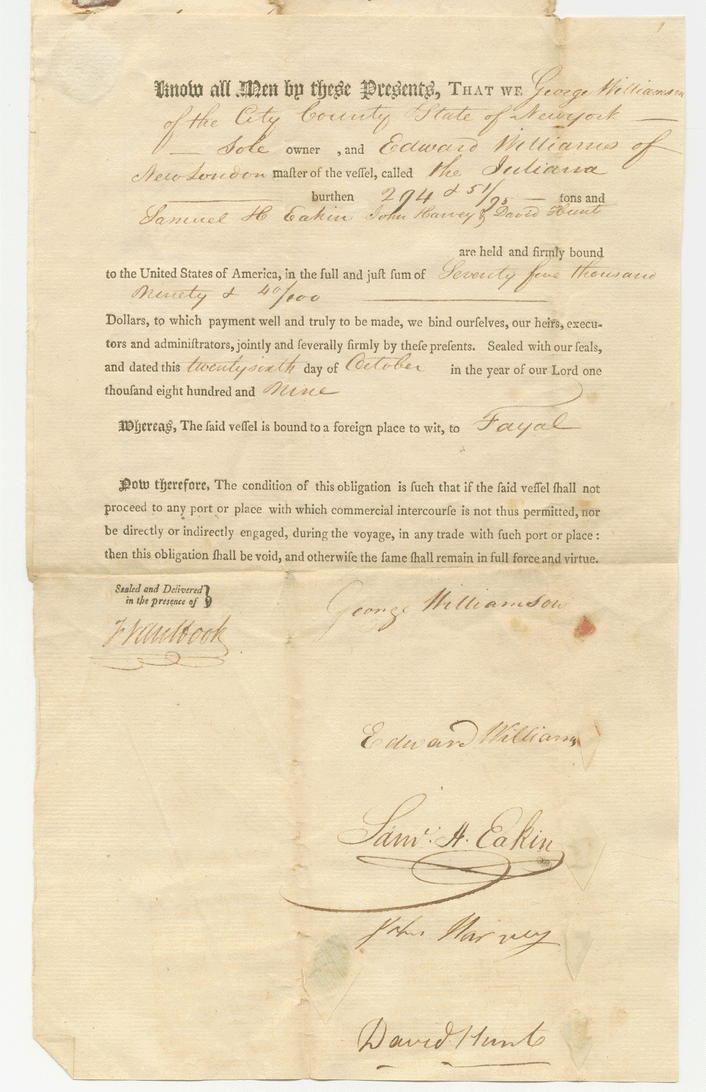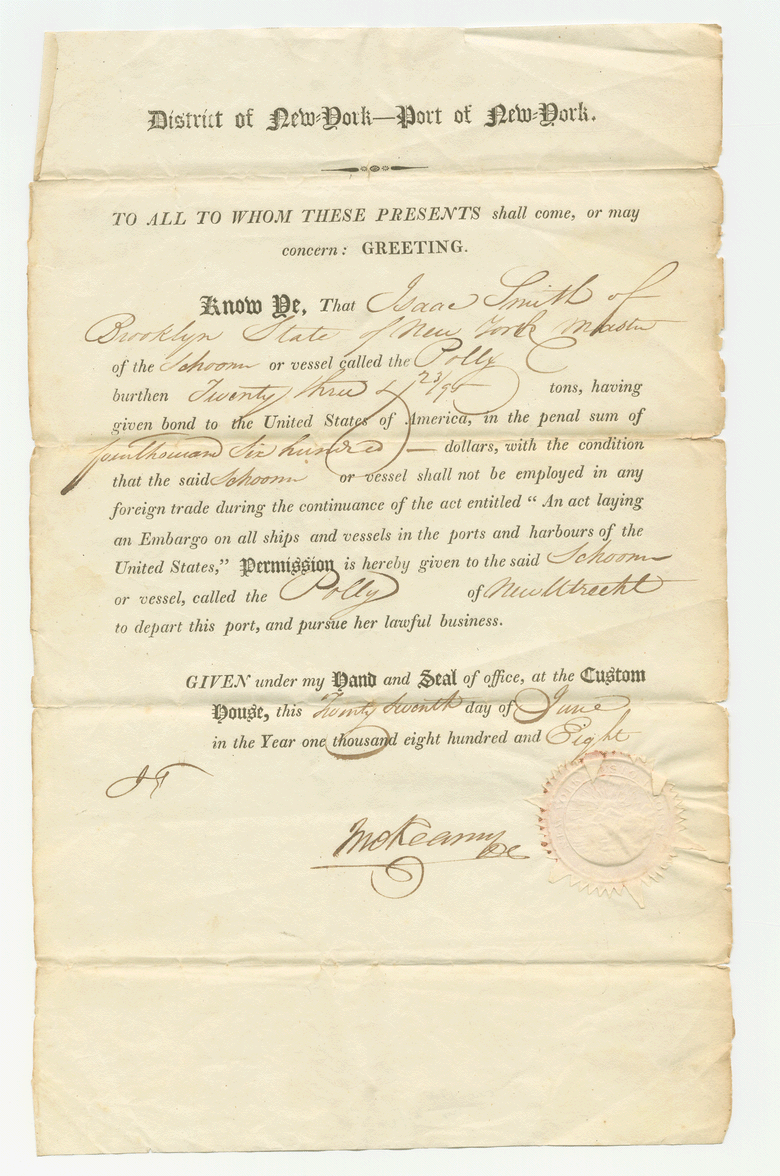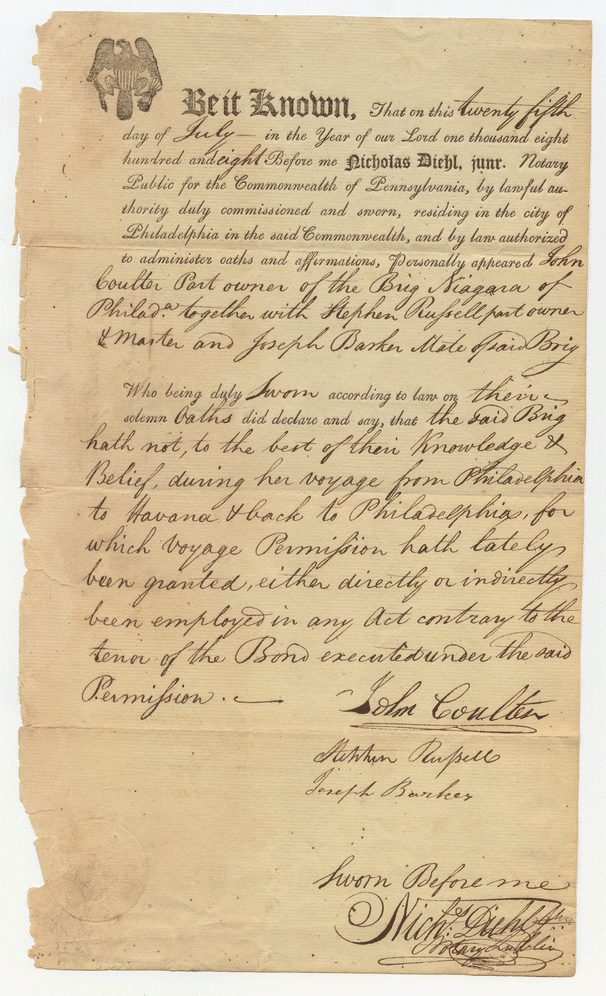To obtain clearance papers during the early decades of the nineteenth century, owners and/or masters often had to swear that their vessel would not engage in trade with particular nations. In addition they were required to sign a Bond, sometimes totaling over 75 thousand dollars, to insure their compliance with all existing laws governing foreign trade. During the embargo, in effect from 25 December 1807 to I March 1809, permission for foreign voyages was particularly restricted. Later, during the era of the Non-Intercourse Act, trade with France and England was prohibited. If the Bond were violated, the collector could initiate legal action against the Bond holders, and if the libel case was successfully prosecuted by the District Courts, the amount of the Bond, plus any additional expenses, was forfeited to the United States.

Bond For A Foreign Voyage: This document indicates that the owner, master, and three others, were bonded to the United States for the sum of $75,090.40, in order to insure compliance with all existing trade and embargo laws by the ship Juliana during her voyage to Fayal, 26 October 1809. Bonds might vary somewhat from one port of issue to another, although much of the language within these documents remained the same. One might also find handwritten bonds, which would most often be record copies. Originals might frequently contain the usual customs signatures, stamps or seals, and could also have related papers (i.e. Manifests, Clearance Papers, etc.) attached to them. The example illustrated here was the Collector’s copy.

Bonded Voyage Permit: Enrolled vessels were also bonded, to insure that the “…vessel shall not be employed in any foreign trade during the continuance of the act entitled ‘An Act laying an Embargo on all ships and vessels in the ports and harbours of the United States ‘… ” The customs document illustrated here indicates that the Schooner Polly has been bonded in the sum of $4,600.00, and can now “…depart this port, and pursue her lawful business, ” New York 27 June 1808. Document contains the signature of the Deputy Collector, and a customs seal.

Bonded Voyage, Oath of Compliance: The owner and master of the Brig Niagara obtained this notary document, within which they made oath that their vessel did not violate the articles of her Bond, during a voyage from Philadelphia to Havana and back. After acceptance of this document by the Collector at Philadelphia, the Bond would be cancelled. July 25, 1808.
